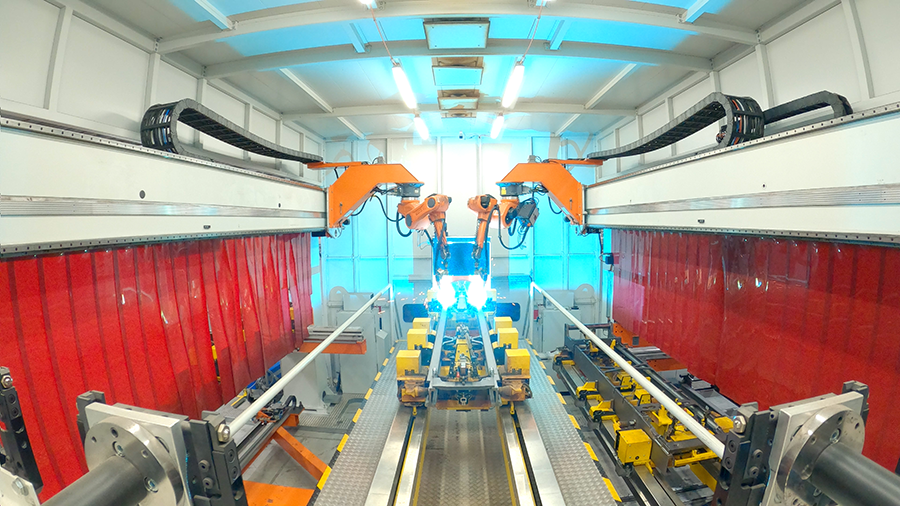For decades, robotic welding meant one thing: a fixed cell with a fixture inside and a robot bolted to the floor.
That model worked. It still does. But if you’re welding long, heavy, or high-mix parts, you’ve likely run into its limits.
Manufacturers today are moving past the traditional setup. With flexible layouts, mobile robots, and smarter control systems, shops are adapting automation to the work—not the other way around.
Here’s what that looks like on the floor right now, and where it’s going next.

Flexible Robots and Systems in Action
Robots That Travel Instead of Repositioning the Part
Track-mounted robots allow systems to handle large assemblies like trailers, chassis frames, and structural weldments. By moving the robot along a floor-mounted rail, you reduce handling and keep the weld torch where it needs to be.
Multi-station workflows are possible on a single rail. While one station welds, another loads. Operators stay in place, parts stay in flow.
Overhead and Multi-Axis Access for Better Reach
Gantry-mounted systems provide top-down access without crowding the floor. They are ideal for tall or wide parts and improve torch angle control for complex joints.
With a gantry and multi-axis fixture, the robot can weld around corners, inside frames, and across full lengths—without flipping or repositioning the part manually.
Part Positioning That Improves Weld Quality
Positioners let you rotate the part instead of the torch. This allows welds to stay in flat or horizontal positions, improving quality, reducing rework, and protecting your team from manual lifting.
A good positioner turns the robot into a multi-axis system that can tackle larger and more complex jobs with better repeatability.
Orchestrating More Than Just the Weld
Today’s robotic systems often go beyond welding. They coordinate part handling, in-line grinding or finishing, and inspection tasks.
Using tool changers, vision systems, and tandem robot control, shops are building full-process cells that cut down on floor space and eliminate unnecessary handoffs.
Layouts That Adapt to High-Mix and Low-Volume Work
Flexible layouts are becoming the standard for shops that don’t run the same part day after day. Vision systems identify parts on the fly. Smart PLCs sequence operations without manual input. Conveyors or AGVs deliver parts across zones.
The result is a robotic welding environment that responds to variation without sacrificing speed or quality.
Looking Ahead: Smarter, Mobile, Adaptive Systems
The future of welding automation is moving fast.
- AI models that adjust weld parameters in real time
- Robots that travel autonomously between stations
- Programming driven by vision, not code
Manufacturers that design for adaptability now will be better equipped to meet tomorrow’s demand—especially with workforce constraints and shorter lead times.
If your current weld cell feels like it’s holding you back, maybe it is.
Let’s review your workflow, part mix, and space to see where mobility or smarter layout can expand your capacity, without expanding your footprint.
